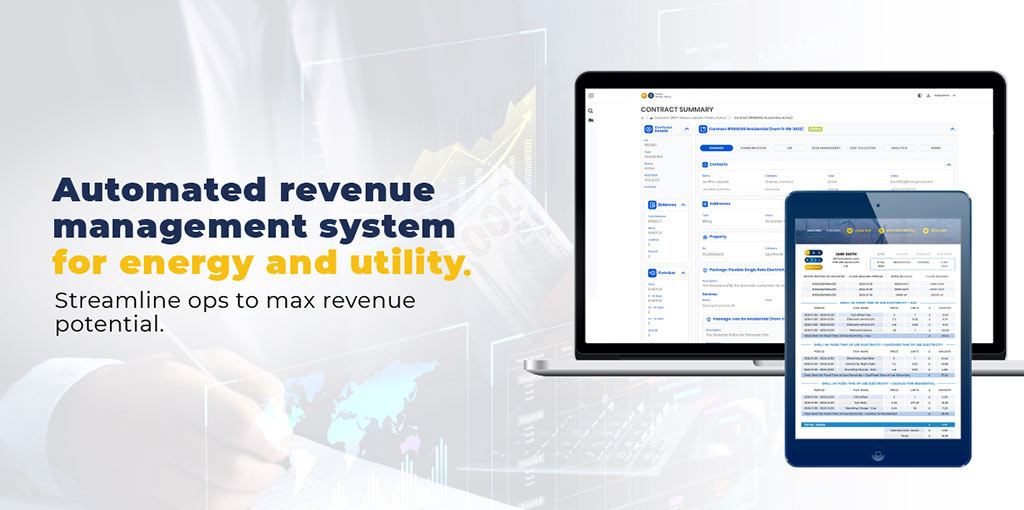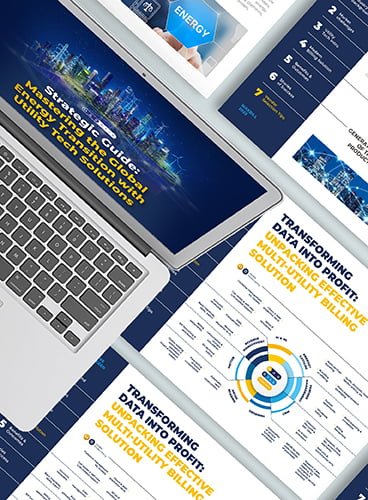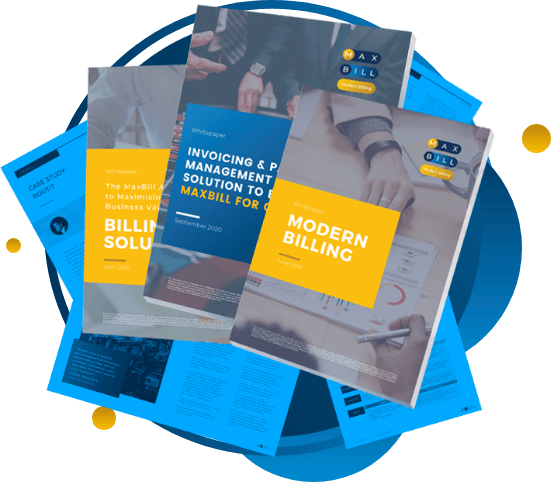Update: May 12, 2025
The more product and service offers of energy and utility business are getting complex and intricate, the more there’s the need for automated processes in revenue management.
One of our prospects is growing into four new countries and adding EV charging to their main offering. Since EV charging comes with tricky tariffs, different driver profiles, and various network setups, it really needs smooth revenue reconciliation and settlement processes.
Otherwise, you won’t be able to ‘get along’ with partners or third-parties in the business where everyone wants to get their reward in time.
Again, that’s where an automated revenue management system can really make the difference — and even be a key success factor.
At MaxBill, we see energy and utility businesses are using the automated revenue management system to handle multiple income flows, diversify their portfolios, and remain supportive and helpful to clients.
In this article, we’ll distil automated processes in revenue management around energy and utility billing and CRM and help you identify areas to improve your operations to max revenue potential.
Let’s dive deep.
Key Takeaways
- Automated processes in revenue management encompass revenue recognition, compliance support, a holistic financial reporting.
- Revenue management solutions with automation manage diverse contracts, intricate billing and revenue reconciliation; streamline complex pricing models, and provide greater visibility across revenue ops.
- There are 8 critical reasons for E&U CIOs to leverage automation in revenue management to achieve impactful changes.
- E&U companies get up to 40% of invoice processing time reduction, 100% of billing accuracy, complete transparency of ops, and the next level of revenue performance.
- An automated revenue management system makes a good team with end-to-end billing.

What is an automated revenue management system?

The science behind revenue management is quite simple. In the domains of utility, iGaming, telecom, and other industries MaxBill serves, such an approach suggests selling the appropriate services to the right clients at the right time, and at the right price – all of that in the most efficient way.
Chron provides an excellent definition, and we cannot agree more:
“Revenue management is the practice of maximising a company’s revenues while selling the same amount of products or services. Also called yield management, some consider it both an art and a science.”
An automated revenue management system (ARMS) is software that assists financial managers in running revenue tasks more effectively and optimising the costs associated with income operations. ARMS takes a variety of factors into account, including historical data, rates, seasonality, etc. to optimize rates and maximise revenue. By using ARMS, industries can increase profitability, improve decision-making, and better manage their inventory.
Automated processes in revenue management for energy and utility service providers
At MaxBill, we identify three core reasons why automated processes in revenue management can be a game-changer for energy and utility.
Billing and revenue recognition
Revenue recognition rules are critical in energy and utilities due to the following reasons:
- The company has complex billing models and there’s the need for accurate recording based on actual delivery and consumption: e.g., multi-rate, time-of-use, usage-based, or tiered pricing models.
- This kind of business is highly regulated and strictly observed (by watchdogs like Ofgem, e.g.). Authorities require transparent, auditable revenue reporting.
- Revenue recognition automation supports compliance with IFRS 15 or ASC 606, especially for bundled or long-term service contracts.
- Deferred revenue and payments should recorded properly. Many customers prepay or are billed in advance, especially in smart metering or subscription-based utility services. Revenue must be recognized only when the service is delivered, not when the cash is received.
- The board or investors need a clear grasp of financials in the company.
In a sector with frequent mergers, acquisitions, and public funding, proper revenue recognition is vital for clean financial operations and due diligence processes.
- Revenue managers need to demonstrate performance metrics and financial planning. Accurate revenue recognition ensures that key metrics, like monthly recurring revenue (MRR) or cash flow forecasting, reflect true performance. This drives better decision-making and investment planning.
- If revenue is recorded inaccurately, it can result in billing disputes, customer dissatisfaction, and reputational damage. Transparent recognition supports trust and fairness in billing.
Compliance support
As previously stated, the sector is highly regulated. For instance, for data protection, a business should adhere to GDPR / ISO 27001; for sustainability and energy efficiency – CSRD / EED. Local frameworks also put pressure on the business, such as Ofgem’s Heat Network Market Framework, HNOG, etc.
AI-driven tools require compliance with the AI Act, also stating what utilities are allowed to do and what not in their interaction with customers. Compliance support ensures that systems, processes, and reporting align with these evolving requirements.
At MaxBill, for example, automated compliance goes with automated revenue management, which allows to avoid find and legal risk by default. Simply run your business safely by default!
Holistic financial reporting
A comprehensive financial reporting demonstrates the company’s health around cash flow and equip revenue managers with clear insights to drive confident, data-backed decisions.

Revenue automation software for SaaS and subscription-based businesses
Modern utilities and multi-utility services leverage SaaS billing tools and cooperate with billing tech vendors on the subscription-based basis. Traditionally, such tools come with built-in revenue management automation, which helps companies manage diverse contracts, intricate billing and revenue reconciliation; streamline complex pricing strategies and models, and provide greater visibility across revenue ops.
Related:
How B2B SaaS billing empowers utilities to scale smarter in 2025.
The best recurring billing software for energy and utilities to streamline ops in 2025.
SaaS subscription billing solutions for energy and utility to thrive in 2025.
Why successful utility CIOs use automation in revenue management

CIOs in energy and utilities need automation in revenue management for several compelling reasons:
Efficiency and cost reduction
Automation helps in streamlining back-office and operational processes, which are often labor-intensive and repetitive. By implementing technologies like Robotic Process Automation (RPA), energy and utility companies can reduce operational and maintenance (O&M) expenses significantly. This leads to increased worker capacity by 15%-25%, allowing employees to focus on higher-value tasks.
Improved customer and employee experience
Automation in revenue management enhances the efficiency and satisfaction of both customers and employees. Automated processes can manage tasks such as billing, collections, and customer service more effectively, reducing the cycle time and improving service quality. This results in a more satisfying experience for customers and a more engaging work environment for employees.
Regulatory and compliance benefits
Automated systems can help manage regulatory reporting, compliance, and risk monitoring more efficiently. This ensures that energy and utility companies stay compliant with industry regulations and can swiftly respond to changes in policies, such as those aimed at reducing carbon emissions.
Data-driven insights and optimization
Tools like process mining and data visualization enable CIOs to identify inefficiencies and optimize processes. This structured approach to process excellence helps in uncovering execution gaps, monitoring cash flow, and improving the overall operational efficiency. The insights gained from data-driven approaches can guide the implementation of effective automation strategies.
Scalability and future-proofing
Revenue management automation allows for scalable solutions that can adapt to future challenges and opportunities. As the energy sector evolves, with increasing emphasis on sustainable practices and new service offerings, automated systems provide the flexibility needed to innovate and stay competitive.
Cultural and organizational transformation
Automation fosters a cultural shift towards embracing technology and innovation. By involving multidisciplinary teams and securing buy-in from various stakeholders, CIOs can lead the organization through a transformative journey, ensuring that employees see the benefits of automation in their daily work.
Benefits of revenue management automation

1. Reduction of invoice processing time
Implementing automation in financial processes can significantly reduce the time it takes to process invoices. To be specific, it cuts down 10% to 40% of your processing time. The system completes all necessary tasks, such as data entry, number confirmation, and obtaining required approvals, without the need for further human intervention.
It frees up employees’ time and energy to focus on raising productivity and handling complex tasks, allowing them to be more creative and productive.
Revenue management automation also paves the way for a more streamlined routine. It prevents your operations from getting stuck and ensures that the billing process flows smoothly.
Not to mention, it prevents you from missing deadlines and due dates since it automatically processes the billing. Additionally, automation helps speed up cash flow by shortening the time between when billing starts and when invoices are sent out.

2. Billing & invoicing accuracy
Accounting errors can have a significant impact on your business. It might even result in losing money in the process. Meanwhile, backtracking and resolving such mistakes means taking precious time away from employees who need to focus on other essential tasks. Furthermore, resolving errors manually does not guarantee that the same errors will not occur again.
So, one of the meaningful benefits of revenue management automation software is that it can reduce the likelihood of billing mistakes. It helps to avoid errors that are usually common when tasks are completed manually, like miscommunication, miscalculation, misfiling, and typos when entering data. By automating your billing operations, you can minimise the risk of duplicate payments, overpayments, and underpayments.
3. Billing process transparency

Any discrepancy in the invoices might lead to severe consequences for the company. Keeping track of the cash flow is critical for the high efficiency of any business.
Revenue management automation helps keep an eye on every billing process within your organisation. It provides real-time monitoring, live updates, and report generation to keep you aware of the current status of your payment cycles.
According to FinancesOnline’s guide on billing and invoicing software analysis, implementing the appropriate software can give you greater control over your finances in no time. Additionally, it can help prevent unauthorised access to financial information and reduce the risk of data breaches in the future.
4. Revenue performance driven by operational efficiency

When it comes to operational efficiency in the financial area, the revenue automation system is king. When it comes to processing invoices, bottlenecks are often inevitable. Specific approvals must be obtained before money can be transferred between bank accounts. Having to follow up manually back and forth between the client, bank, and supplier can eventually be exhausting and inefficient. This puts other tasks on hold in the process.
Using an automated revenue management system helps you get rid of these bottlenecks. With just a few clicks, you can start billing your customers, validating checks, previewing invoices, and maintaining recurring charges. And since everything is automated, you can go on with other value-adding tasks in between while also taking your customer communication to the next level.
5. Digital transformation

Automating billing operations also means digitization across the entire company. It eliminates the need for paper trails and file cabinets since all documents and files will be accessible in a digital storage system.
There are several benefits to going digital. It facilitates better collaboration since anyone with access can retrieve and send necessary files and data to the rest of the organization. Likewise, digital files mean you don’t have to worry about misplacing or losing important documents. Not to mention, it is much easier to organize, categorize, and archive them when needed.
How automated revenue management system complete end-to-end billing by MaxBill?

ARMS makes a good team with end-to-end billing. Once companies establish prices and proceed to charging for services, it’s crucial to evaluate the quality of billing. In this regard, MaxBill helps by delivering a meaningful metric, Days Sales Outstanding.
DSO is an accounting metric that gauges how long it typically takes a company to get paid for products and services bought on credit.
The lower the DSO, the faster payments are collected, while a higher DSO indicates a longer period before the company receives its money. By tracking DSO, companies can improve their cash flow and optimize their revenue management processes.
Here are other areas where companies get solutions for:
Accounts receivable
With the help of a tailored payment plan and automated payments from the defined bank account, businesses allow customers and partners greater leeway in how and when they pay their bills. Businesses are enabled to maintain the receivable side of customer accounts.
Accrual reporting and forecast
Thanks to an automated revenue management system, it becomes simple to track unbilled revenue earned for the entire client base or simply a certain segment.
Collection activities
Managers oversee unpaid invoices, including late fees and past-due uncollectible receivables, and they set up operations to collect the arrears in accordance with the organization’s standards. The automated revenue collection system will save the day if the company faces significant indebtedness from consumers.
Manage payment arrangement
The team can quickly design, collect, and track time-defined payment arrangements with the right software, taking care of customers’ demands throughout the journey and generating additional income.
Discover MaxBill revenue and debt management:
Take full control with the automated revenue management system
Automating your billing operations can help you take greater control of your revenue performance by optimizing your processes, streamlining communications, and increasing productivity. It’s more than just letting the software do all the work; it means reducing the chances of missed or duplicate payments, errors, and delays during billing. With automation, you can focus on your core business activities while ensuring that your billing operations run smoothly, efficiently, and with improved accuracy.
































